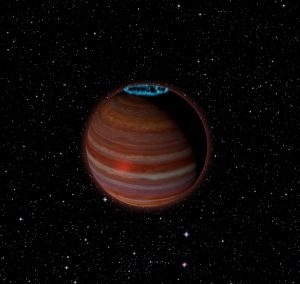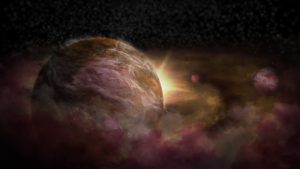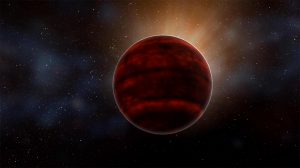ALMA has made the first-ever observations of a circumplanetary disk.
Image Release: ALMA Shows Birth of Spiraling Giants
Using ALMA, astronomers have observed the formation and mutually entwined motions of a massive binary star system.
The Epoch of Planet Formation, Times Twenty
ALMA has conducted a survey of protoplanetary disks, the planet-forming dust belts around young stars.
VLA Detects Possible Extrasolar Planetary-Mass Magnetic Powerhouse
Astronomers have used the VLA to detect a possible planetary-mass object with a surprisingly powerful magnetic field some 20 light-years from Earth. It can help scientists better understand magnetic processes on stars and planets.
Trio of Infant Planets Discovered around Newborn Star
Two independent teams of astronomers have uncovered convincing evidence that three young planets are in orbit around an infant star known as HD 163296. Using a new planet-finding strategy, the astronomers identified three discrete disturbances in a young star’s gas-filled disk: the strongest evidence yet that newly formed planets are in orbit there.
Powerful Flare from Star Proxima Centauri Detected with ALMA
ALMA data reveal that a powerful stellar flare erupted from Proxima Centauri last March. This space weather may make that system rather inhospitable to life after all.











